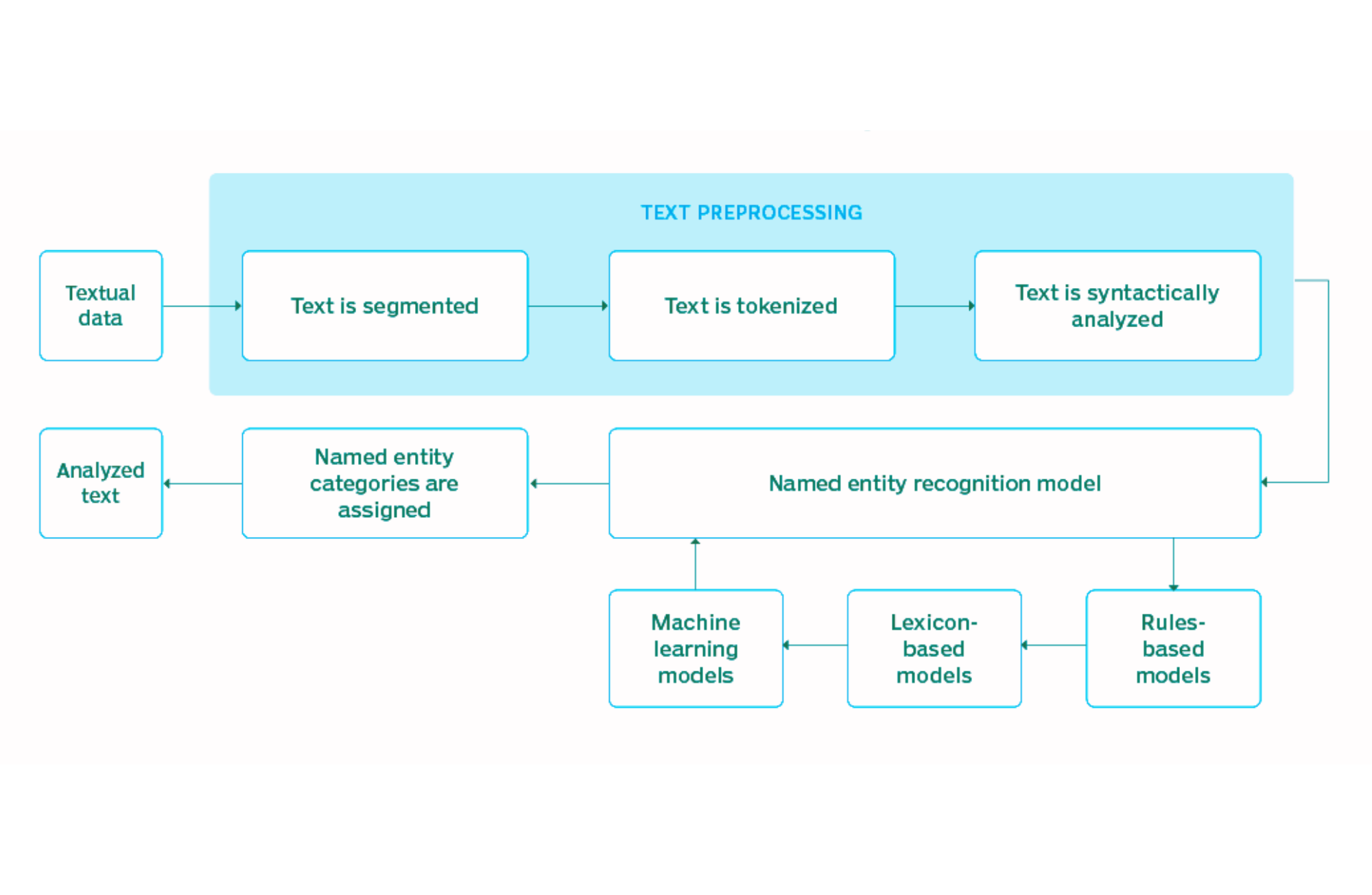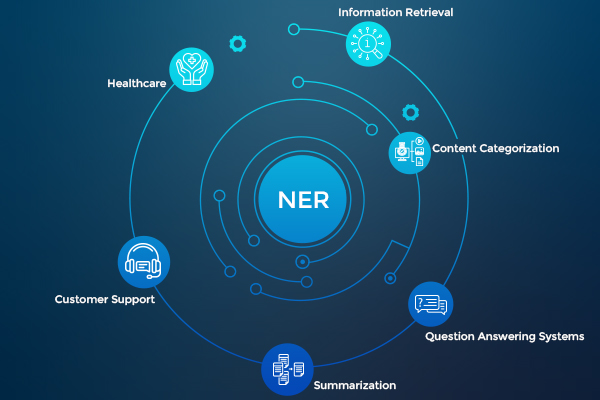What is Named Entity Recognition (NER) in NLP?
Published on: Aug 13, 2024

Written by: Admin
What is Named Entity Recognition (NER)?
Named Entity Recognition (NER) identifies and categorizes key information in text, such as names, dates, and locations, aiding in extracting meaningful insights from unstructured data.

Key Components of NER
- Entity Identification: This step involves locating the entities within a text. For example, in the sentence "Barack Obama was born in Hawaii," the entities "Barack Obama" and "Hawaii" are identified.
- Entity Classification: Once the entities are identified, they need to be classified into predefined categories such as PERSON, LOCATION, ORGANIZATION, DATE, etc. In the previous example, "Barack Obama" would be classified as PERSON and "Hawaii" as LOCATION.
Applications of NER
NER is used in various applications across different industries:
- Information Retrieval: Enhances search engines by allowing them to understand and categorize content better.
- Content Categorization: Helps in organizing and categorizing large volumes of text data.
- Question Answering Systems: Improves the accuracy of answers by identifying relevant entities in questions and texts.
- Summarization: Extracts key information for creating summaries of documents.
- Customer Support: Automates the extraction of essential details from customer queries for better support and service.
- Healthcare: Identifies medical terms, patient information, and treatment details in medical records and research papers.

How NER Works
NER systems can be built using various approaches, including:
- Rule-Based Methods: Use predefined patterns and linguistic rules to identify entities. These methods are often simple but can be limited in handling complex or ambiguous cases.
- Machine Learning-Based Methods: Use annotated datasets to train models that can recognize entities. Popular algorithms include Conditional Random Fields (CRFs), Hidden Markov Models (HMMs), and deep learning models like Long Short-Term Memory (LSTM) networks.
- Hybrid Methods: Combine rule-based and machine learning approaches to leverage the strengths of both.
Example of NER in Action
Consider the following sentence: "Apple Inc. announced the release of the new iPhone 12 in California on October 13, 2020."
An NER system would process this sentence and identify the entities as follows:
- "Apple Inc." - ORGANIZATION
- "iPhone 12" - PRODUCT
- "California" - LOCATION
- "October 13, 2020" - DATE
NER in Modern NLP Frameworks
Modern NLP frameworks and libraries provide robust tools for NER, making it accessible for various applications. Some popular NER tools and libraries include:
- spaCy: A free, open-source library that provides pre-trained models for NER and other NLP tasks.
- NLTK (Natural Language Toolkit): A comprehensive library for NLP in Python, offering tools for NER.
- Stanford NLP: Provides a suite of NLP tools, including a powerful NER component.
- BERT (Bidirectional Encoder Representations from Transformers): A deep learning model developed by Google that can be fine-tuned for NER tasks.
Named Entity Recognition (NER) is a crucial technique in NLP for extracting and categorizing entities in text. Its applications span across multiple domains, enhancing information retrieval, content categorization, and many other processes. With the advancement of machine learning and deep learning techniques, NER continues to evolve, offering more accurate and efficient ways to handle unstructured text data.

